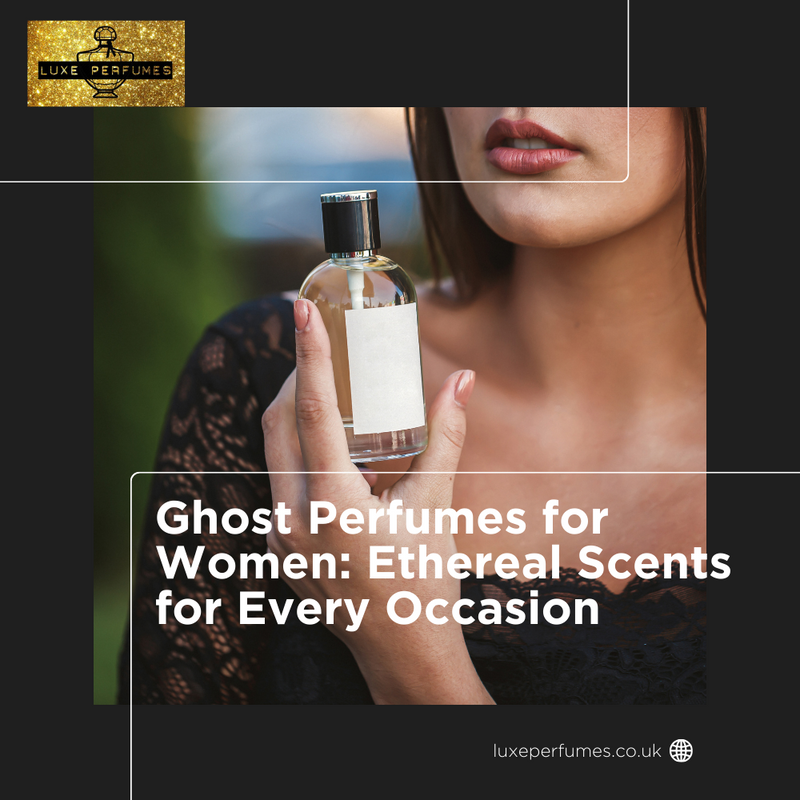
Understanding fragrance notes is essential when choosing a perfume that resonates with your personal style and preference. Perfumes are composed of various notes that unfold over time after application, contributing to a complex and evolving scent experience. These notes are categorized into top, middle, and base notes, each playing a distinct role in the perfume's overall aroma.
Top NotesTop notes are the initial scents that you perceive immediately upon applying a perfume. They are typically light, fresh, and volatile, evaporating quickly. These notes are intended to make a strong first impression but do not last long. Common top notes include citrus (like lemon and bergamot), light fruits (such as berries and grapefruit), and herbs (like lavender and sage).
Middle Notes
Also known as heart notes, the middle notes emerge just after the top notes dissipate. They are considered the heart of the perfume, representing the main elements of the scent. Middle notes are usually more mellow and rounded, lasting longer than the top notes but not as long-lasting as the base notes. Floral scents like rose, jasmine, or ylang-ylang, and spices like cinnamon and nutmeg are popular middle notes.

Base Notes
The base notes are the final fragrance notes that appear once the top notes are completely evaporated. These scents are rich, deep, and long-lasting, providing the foundation upon which the top and middle notes rest. Base notes will often be detectable several hours after the perfume is applied. Common base notes include sandalwood, musk, amber, and vanilla. They are crucial for the longevity of the scent on your skin.
How to Identify Your Preferred Scents
-
Sampling: Always try a perfume before buying. Apply a small amount on your wrist and let it sit for several hours to experience all the notes as they unfold.
-
Understanding Your Preferences: Pay attention to the types of scents you are drawn to in other products like candles or body washes. This can guide your perfume choices.
-
Season and Occasion: Consider when and where you will wear the perfume. Lighter scents with prominent top notes are great for daytime and warmer seasons, while richer scents with strong base notes might be better suited for evening and colder months.
-
Layering Scents: Some perfumes can be layered to create a unique scent. Experiment with different combinations of perfumes to find a unique blend that speaks to your personality.
-
Research: Read about the fragrances used in a perfume. Understanding the notes can help you identify patterns in your scent preferences and guide future purchases.
By familiarizing yourself with the different types of perfume notes and recognizing your own scent preferences, you can better navigate the vast world of fragrances and select a perfume that truly becomes your signature scent.
Exploring Scent Families: Finding the Right Category for You
Exploring scent families can be an exciting journey into the world of fragrance, offering a diverse range of olfactory experiences to suit various preferences and personal styles. Here's a breakdown of some common scent families and tips on how to determine which one aligns with your tastes:
-
Floral:
- Floral scents are derived from flowers and often evoke a sense of femininity and romance.
- If you enjoy the aroma of fresh blooms like roses, jasmine, or lilies, you might appreciate floral fragrances.
- Look for perfumes with notes such as rose, peony, violet, or gardenia.
-
Oriental:
- Oriental fragrances are characterized by their warm, spicy, and exotic notes, often including ingredients like vanilla, cinnamon, and amber.
- If you're drawn to rich and sensual scents with a hint of mystery, oriental fragrances might appeal to you.
- Seek out perfumes featuring ingredients like patchouli, musk, oud, and incense.
-
Woody:
- Woody scents are earthy and grounded, evoking images of forests and nature.
- If you enjoy the smell of freshly cut wood or the warmth of a cozy fireplace, woody fragrances could be your go-to.
- Look for perfumes with notes such as cedarwood, sandalwood, vetiver, or oakmoss.
-
Fresh:
- Fresh fragrances are light, crisp, and invigorating, reminiscent of citrus groves and clean air.
- If you prefer scents that are refreshing and uplifting, fresh fragrances might suit your style.
- Seek out perfumes featuring notes like citrus fruits, green tea, mint, or aquatic accords.
Tips for Finding Your Scent Family:
- Experiment with different fragrance samples: Visit a perfume store or utilize sample services to try out a variety of scents from different families.
- Consider your environment: Think about where you'll be wearing the fragrance most often. A light, fresh scent might be ideal for daytime wear, while a richer, oriental fragrance could be perfect for evenings.
- Reflect on your personality: Your scent preferences can often reflect aspects of your personality. If you're outgoing and vibrant, you might lean towards fresh or floral fragrances, while someone more introspective might be drawn to woody or oriental scents.
- Trust your instincts: Ultimately, the best way to determine your preferred scent family is to trust your nose and choose fragrances that resonate with you on a personal level.
By exploring the diverse world of scent families and considering your own preferences and personality, you can find the perfect fragrance that complements your style and leaves a lasting impression.
The Art of Perfume Layering: Customizing a Unique Scent
Perfume layering is a wonderful technique that allows you to create a personalized and unique scent by combining multiple fragrances. Here are some tips and best practices to master the art of perfume layering:
-
Start with a Base: Begin by selecting a base scent that forms the foundation of your custom fragrance. This base fragrance should have good longevity and serve as the anchor for the other layers. Common base notes include vanilla, musk, or woody accords.
-
Choose Complementary Scents: Select additional perfumes that complement the base scent and enhance its character. Consider the fragrance families and notes that you enjoy, such as floral, citrus, oriental, or woody. Experiment with different combinations to find ones that harmonize well together.
-
Layering Technique: Apply the fragrances in layers, starting with the base scent and then adding the complementary fragrances on top. You can spray each perfume directly onto your skin or onto different pulse points to allow the scents to mingle naturally.
-
Mind the Strength: Be mindful of the intensity of each fragrance you're layering. Some perfumes may be more potent than others, so adjust the amount you apply accordingly to achieve a balanced blend. Start with a light application and gradually build up the layers as needed.
-
Consider Season and Occasion: Tailor your custom scent to the season and the occasion. Lighter, fresher fragrances are often preferred for daytime wear and warmer months, while richer, more complex scents may be better suited for evenings or cooler weather.
-
Experiment and Have Fun: Don't be afraid to get creative and experiment with different scent combinations. Perfume layering is a highly personal process, and there are no strict rules. Trust your instincts and explore various combinations until you find one that resonates with you.
-
Test and Adjust: Once you've layered your fragrances, give them some time to settle and evolve on your skin. The true character of the custom scent may reveal itself over time as the different notes interact. If necessary, you can make adjustments by adding more of one fragrance or layering additional scents.
-
Take Notes: Keep track of the combinations you try and how they make you feel. Note which combinations you enjoy the most and which ones receive compliments from others. This will help you refine your perfume layering technique and create signature scents that truly reflect your personality.
Perfume layering is a creative and enjoyable way to express your individuality through fragrance. With some experimentation and a willingness to explore different scent combinations, you can craft a custom scent that is uniquely yours and leaves a lasting impression.
Seasonal Scents: Choosing Perfumes for Different Times of the Year
Selecting fragrances that align with the seasons can enhance your overall sensory experience and evoke the mood and ambiance of each time of year. Here's a guide to choosing perfumes for different seasons:
-
Spring:
- Spring is a time of renewal and freshness, so opt for light and uplifting fragrances that capture the essence of blooming flowers and budding trees.
- Look for scents with floral and green notes, such as rose, jasmine, peony, or lily of the valley.
- Fresh and citrusy fragrances, like those featuring notes of bergamot, grapefruit, or green tea, are also excellent choices for spring.
-
Summer:
- Summer calls for refreshing and invigorating scents that provide a cool respite from the heat.
- Choose light and airy fragrances with aquatic or citrusy accords, reminiscent of a seaside breeze or a tropical getaway.
- Look for perfumes featuring notes like sea salt, coconut, citrus fruits, or cucumber.
- Consider opting for fragrances in lighter concentrations, such as eau de toilette or body mists, for a refreshing and subtle scent experience.
-
Fall:
- Fall is characterized by cozy and comforting aromas that reflect the changing colors of the leaves and the crispness in the air.
- Choose richer and more complex fragrances with warm and spicy notes that evoke the feeling of autumnal evenings by the fireplace.
- Look for scents featuring ingredients like cinnamon, vanilla, amber, or leather.
- Woody fragrances with notes of cedarwood, sandalwood, or patchouli are also perfect for capturing the essence of fall.
-
Winter:
- Winter calls for indulgent and opulent fragrances that provide warmth and comfort during the colder months.
- Opt for rich and enveloping scents with deep, resinous, and gourmand notes that evoke the feeling of cozying up in a blanket of snow.
- Look for perfumes featuring ingredients like oud, incense, vanilla, or tonka bean.
- Spicy fragrances with notes of cloves, nutmeg, or cardamom add an extra layer of warmth and sophistication to winter perfumes.
When selecting perfumes for different seasons, consider not only the fragrance notes but also the concentration and longevity of the scent. Lighter formulations like eau de toilette or body sprays are often more suitable for warmer months, while richer concentrations like eau de parfum or perfume extracts are perfect for colder weather. By choosing fragrances that harmonize with the seasons, you can enhance your sensory experience and create lasting olfactory memories throughout the year.
Longevity and Sillage: How to Choose a Perfume That Lasts




